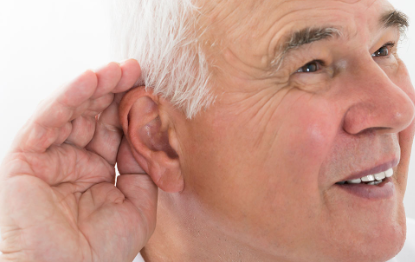Hearing is one of our most vital senses, allowing us to communicate, enjoy music, and be alert to our surroundings. However, like many aspects of health, hearing can decline over time. Understanding the typical age at which hearing loss occurs and recognizing the signs of hearing loss is crucial for early intervention and effective management.
Understanding Hearing Loss
Hearing loss can be broadly categorized into three types: conductive, sensorineural, and mixed. Conductive hearing loss occurs when sound waves cannot efficiently travel through the outer and middle ear. Sensorineural hearing loss is due to damage to the inner ear or the auditory nerve, and mixed hearing loss is a combination of both.
Conductive Hearing Loss
This type of hearing loss often results from blockages, ear infections, or damage to the ear structures. It can affect individuals of any age but is more common in children and young adults due to infections or injuries.
Sensorineural Hearing Loss
Sensorineural hearing loss is the most common type in older adults and results from the natural aging process, exposure to loud noises, or other health conditions. It typically occurs gradually and affects the ability to hear high-pitched sounds first.
Mixed Hearing Loss
As the name suggests, mixed hearing loss involves both conductive and sensorineural components. It can result from a combination of aging, noise exposure, and physical blockages or damage.
Age and Hearing Loss
Hearing Loss in Children and Adolescents
Hearing loss can occur at any age, including infancy. Congenital hearing loss, present at birth, affects about 1 to 3 per 1,000 live births. It can result from genetic factors, prenatal infections, or complications during birth.
Hearing loss in children and adolescents is often due to otitis media (middle ear infections), which can cause temporary or permanent damage if untreated. Noise-induced hearing loss is also increasingly common in teenagers due to prolonged exposure to loud music and headphone use.
Hearing Loss in Young Adults
While less common, young adults can experience hearing loss due to exposure to loud environments, such as concerts, nightclubs, or occupational hazards. Genetic conditions, autoimmune diseases, and infections like meningitis can also contribute to hearing loss in this age group.
Hearing Loss in Middle Age
Hearing loss begins to become more noticeable in middle age, typically between 40 and 65 years. This period is often when people start experiencing the early signs of hearing loss, such as difficulty understanding speech in noisy environments, asking others to repeat themselves, or perceiving that others are mumbling.
Hearing Loss in Older Adults
The prevalence of hearing loss significantly increases with age. According to the National Institute on Deafness and Other Communication Disorders (NIDCD), approximately one in three people in the United States between the ages of 65 and 74 have hearing loss, and nearly half of those older than 75 have difficulty hearing.
Age-Related Hearing Loss (Presbycusis)
Presbycusis is the most common cause of hearing loss in older adults. It is a gradual, progressive loss of hearing in both ears, primarily affecting high-frequency sounds. This type of hearing loss is attributed to age-related changes in the inner ear, auditory nerve, and brain pathways.
Recognizing the Signs of Hearing Loss
Early detection of hearing loss can significantly improve the quality of life by enabling timely intervention and management. Here are some common signs of hearing loss to be aware of:
Difficulty Understanding Speech
One of the earliest signs of hearing loss is difficulty understanding speech, especially in noisy environments. You might find yourself asking people to repeat themselves frequently or thinking that others are mumbling.
Turning Up the Volume
If you notice that you need to turn up the volume on the TV or radio higher than others do, it could be a sign of hearing loss. This is often noticed by family members before the individual realizes it.
Trouble Hearing High-Pitched Sounds
High-pitched sounds, such as the voices of women and children, are often the first to become difficult to hear with age-related hearing loss. You might also have trouble hearing the doorbell, phone ring, or alarm beeps.
Ringing in the Ears (Tinnitus)
Tinnitus, a ringing, buzzing, or hissing sound in the ears, is commonly associated with hearing loss. It can be continuous or intermittent and vary in loudness.
Withdrawal from Conversations
People with hearing loss might start avoiding social situations and conversations because of the difficulty and frustration of not being able to hear well. This can lead to social isolation and impact mental health.
Fatigue and Stress
Straining to hear and understand conversations can be exhausting and stressful. If you feel unusually tired or stressed after social interactions, it might be due to hearing loss.
Misunderstanding Words
Mishearing or misunderstanding words can lead to inappropriate responses or confusion. This can be particularly noticeable in group settings or when speaking with someone at a distance.
Causes and Risk Factors of Hearing Loss
Age
The most significant risk factor for hearing loss is age. As we get older, the cumulative effects of noise exposure, health conditions, and natural wear and tear on the auditory system can lead to hearing decline.
Noise Exposure
Exposure to loud noises, whether from occupational settings, recreational activities, or sudden loud sounds, can damage the hair cells in the inner ear and lead to noise-induced hearing loss.
Genetics
Genetic factors play a crucial role in an individual’s susceptibility to hearing loss. If there is a family history of hearing loss, the risk is higher.
Health Conditions
Certain health conditions, such as diabetes, cardiovascular disease, and autoimmune disorders, can increase the risk of hearing loss. Medications that are ototoxic, meaning they can damage the inner ear, also contribute.
Ear Infections and Head Injuries
Chronic ear infections, untreated middle ear infections, and head injuries can lead to hearing loss by damaging the structures of the ear or auditory pathways.
Prevention and Management of Hearing Loss
Protect Your Ears
Protecting your ears from excessive noise exposure is essential to prevent hearing loss. Use earplugs or noise-canceling headphones in loud environments and limit the volume on personal listening devices.
Regular Hearing Check-Ups
Regular hearing check-ups can help detect hearing loss early. Adults should have their hearing tested at least once every decade through age 50 and every three years thereafter.
Healthy Lifestyle
Maintaining a healthy lifestyle can reduce the risk of hearing loss. This includes managing chronic health conditions, avoiding smoking, and staying active.
Hearing Aids and Assistive Devices
Hearing aids are the most common treatment for age-related hearing loss. These devices amplify sounds, making it easier to hear. Other assistive devices, such as amplified telephones and TV listening systems, can also help.
Communication Strategies
Communication strategies can improve interactions with people with hearing loss. These include facing the person when speaking, speaking clearly and at a moderate pace, and reducing background noise.
Conclusion
Hearing loss can occur at any age, but it is most prevalent among older adults. Recognizing the signs of hearing loss early and taking preventive measures can significantly improve the quality of life. Whether through protective strategies, regular check-ups, or using hearing aids, addressing hearing loss proactively ensures better communication, social interaction, and overall well-being. If you or a loved one is experiencing signs of hearing loss, consult with a healthcare professional for proper evaluation and management.


